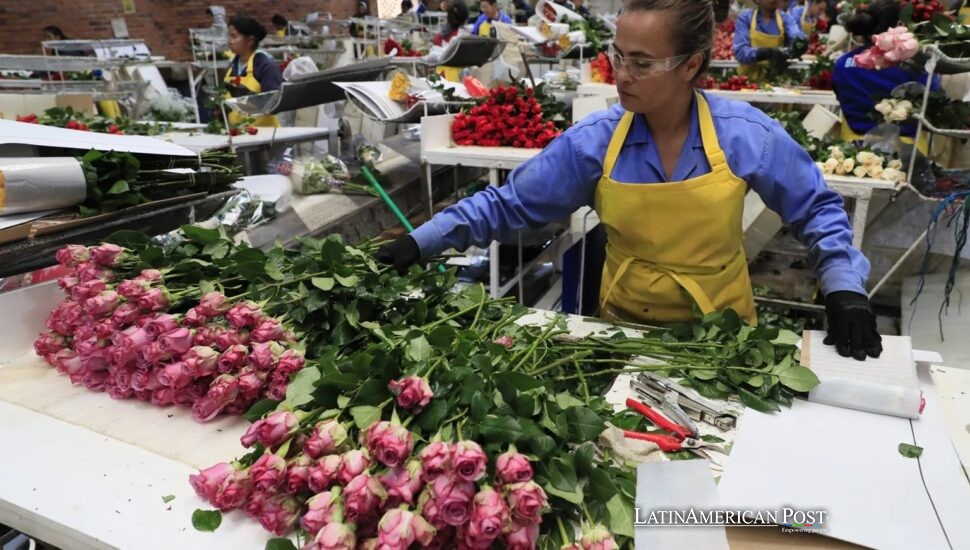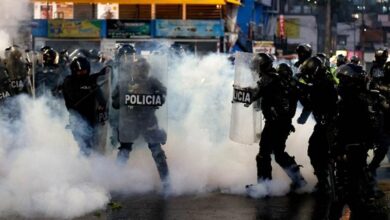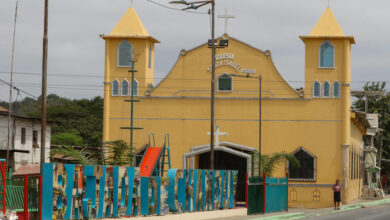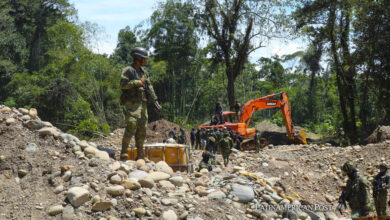Ecuador and Colombia Grow St. Valentine Flower Business Worldwide

Ecuador’s flower exports from Quito reached new heights this Valentine’s Day season, while Colombia’s trade relations with the United States narrowly avoided a damaging tariff battle. As tensions flare and markets grow, the Andean flower industry is at a crossroads.
Surging Holiday Flower Exports from Ecuador
Ecuador’s international airport in Quito is a major center for flower exports. Recent statistics reveal a significant increase in flower deliveries for Valentine’s Day, a peak season for local producers. The Mariscal Sucre International Airport processed 28,779 metric tons ‒ 8.7 % more than last year’s 24,466 metric tons. Market experts link the rise of better farming techniques with an increased international appetite for premium blooms.
Supporting the jump in flower cargo, there were 534 outbound flights, up 9.6% from 487 in the prior season. On the busiest day, an impressive 1,847 metric tons of flowers departed on 31 separate flights. In total, 20 cargo airlines, including regular and charter services, operated through Quito airport to handle the seasonal influx. Once these shipments arrive at their primary destinations—often significant logistics hubs in the United States or Europe—the flowers are distributed further to diverse final markets. This expansion of export flights has generated optimism among producers, shippers, and local authorities, who see it as a sign that Ecuadorian flowers remain globally competitive.
Flowers rank as a key export for Ecuador- the third-largest flower exporter worldwide—trailing only the Netherlands and neighboring Colombia. Sector figures indicate that flower exports from Quito’s airport surpassed 26,000 tons in the previous year, marking a 17% increase from the prior year. Early data also reveals that during the first two months of the current year, flower exports rose 2% compared to the same period last year, signaling continued growth. The flower sector aims to continue its growth through advanced shipping methods and better technology, especially refrigerated transport systems that preserve blooms in transit.
Scientists state that cut flowers last longer with exact temperature levels, correct packing, and meticulous care after harvest. These preservation techniques maintain flower stems in excellent condition from harvest to delivery. Ecuador increased its export volume through better production steps, as global customers demand fresh and attractive products for many days. Modern horticultural techniques—such as selecting robust flower varieties, applying disease-resistant rootstocks, and using drip irrigation to conserve water—also factor into producing top-quality stems that command premium prices internationally.
Colombia’s Narrowly Averted Trade War with the United States
While Ecuador’s flower exports soar, neighboring Colombia faces a different kind of challenge. A recent standoff threatened to escalate into a trade war with the United States, putting at risk the flow of goods—especially for Valentine’s Day staples like flowers, fruits, and nuts. A heated diplomatic row emerged between Colombia and the U.S. about migration rules and the readmission of deportees.
Officials on both sides threatened with very high taxes. The U.S., next to Colombian leaders, exchanged blame as each side declared to impose up to 50 % tariffs. The conflict started after U.S. admin officials stated plans to add import fees as punishment because Colombia declined to let deported people board specific U.S. planes. The Colombian govt retaliated by announcing equal taxes on U.S. products at its harbors.
The dispute affected many sectors besides politics. It sent ripples through supply chains, especially given that Colombia is a significant hub for flowers bound for the U.S. market. A sudden spike in duties on Colombian exports could have translated into higher costs for importers and consumers, particularly in regions like South Florida that handle substantial flower shipments from Colombia. Businesses braced for increased expenses in sourcing the blooms vital to the Valentine’s Day season, and more broadly, they feared disruptions in the trade of bananas, plantains, citrus fruits, aluminum, and construction materials that also flow north from Colombian ports.
The tense situation ended after Colombia accepted deportees who arrived on American flights. As a result, U.S. officials halted their plans to impose new tariffs. Both nations reached this settlement rapidly, which prevented significant financial problems and a possible trade dispute. Though the dust settled for now, observers warn that the episode underscores the fragility of trade alliances that diplomatic disagreements can buffet. The near-conflict highlights how swift policy disagreements can threaten entire economic sectors, including the delicate international flower market.
Scientific and Economic Dimensions of the Flower Trade
From a scientific standpoint, the international flower trade is an intricate ballet of climate requirements, post-harvest technology, and genetic breeding. In Ecuador and Colombia, altitudes in the Andes offer ideal year-round growing conditions for roses, carnations, chrysanthemums, and other ornamental plants prized by global consumers. Warm days, cool nights, and consistent sunlight enhance stem quality and color vibrancy.
Once harvested, flowers must be rapidly cooled to slow metabolic processes that cause wilting, browning, or early petal drop. Special cold-storage facilities at airports and cargo depots allow strict temperature control, sometimes as low as 2°C (35.6°F). These measures keep the flowers semi-dormant, preserving their appearance and extending the vase’s life. Packaging methods also matter: many exporters use custom cardboard cartons and advanced liners to reduce bruising, maintain humidity, and prevent fungal growth. Additional logistical considerations, like humidity management and ventilation, factor into the scientific approach.
For transport across oceans and continents, cargo planes are favored over shipping by sea because speed is crucial to preventing post-harvest deterioration. Thanks to advanced freight technology, growers can now send fresh-cut stems to remote destinations with minimal spoilage, reinforcing the Andean region’s competitive advantage. Air transport of flowers causes carbon pollution. Environmental experts and citizen groups want the sector to embrace eco-friendly methods. Such changes include better flight paths, new fuel types, and reduced waste throughout the delivery system.
The flower business generates substantial revenues. In the United States alone, the demand for flowers around Valentine’s Day is immense, with a large portion flown in from Colombia and Ecuador. By weight, Colombia is one of the top exporters sending flowers to U.S. airports, with Miami International Airport (MIA) acting as the main gateway. However, with more minor overall tonnage, Ecuador remains a premium supplier recognized for the consistently high quality of its blooms. This interplay of mass-market volume from Colombia and upscale varieties from Ecuador underscores the complexity of floriculture commerce across national borders.
Outlook for Andean Commerce and Global Markets
Ecuador and Colombia have leveraged their geographical advantages—high altitude, fertile soil, and moderate climate—to become the world’s flower supply cornerstones. Each nation encounters specific financial or governmental hurdles. Ecuador puts substantial funds into transit systems to manage export increases; the area near Quito’s airport proves such investments. Trade links between Colombia and the U.S. and other markets shape its flower business growth path.
The smallest trade disputes, like recent tax warnings, create broad market insecurity for producers, shipping firms, and sellers.
When Colombia faces U.S. tax threats, it shows how fragile its commercial ties remain. Colombia ships flowers, bananas, plantains, and citrus—items American buyers need daily. Florida’s Port Everglades receives massive produce loads, which proves how much the area needs stable commerce. A brief tax change could disrupt supply chains or raise U.S. store prices.
Scientific progress in plant cultivation remains central to continuous expansion in both lands. Through better farming methods, new flower types, and climate-focused agriculture, Ecuador or Colombia stay top exporters of premium crops. Advanced greenhouse systems, disease prevention, and smart fertilizer or pesticide use help create larger harvests with steady quality levels. Scientific research may also spur innovative methods of shipping and conservation, reducing the carbon footprint of transporting perishable goods.
For consumers and florists, the continual rise in supply from the Andes provides diverse flower offerings—dozens of rose shades, unique tropical blooms, and specialty bouquets—particularly around peak holidays like Valentine’s Day. Yet, as the global market evolves, buyers and sellers may expect more significant discussions about ethical sourcing, fair labor practices, and environmental impact. Large-scale floriculture can involve substantial water consumption, pesticide use, and challenges regarding farmworker conditions. The additional complexity requires flower businesses to balance earnings alongside sustainability.
Experts predict diplomatic conflicts could prompt consumers to seek substitute markets and lead receiving countries to expand domestic flower cultivation. Still, the unique climatic conditions of the Andean highlands give Ecuador and Colombia a competitive edge that is hard to replicate elsewhere. Should trade remain stable, both countries will likely preserve or expand their market shares in the coming years, supported by ongoing innovations in horticulture and transportation.
Also Read: Bolivian Women-Driven Taxi Services Transform Safety
In sum, the Andean flower sector continues to bridge horticultural science, global commerce, and international politics. Recent data affirm Ecuador’s steady rise in flower exports through Quito’s airport. Colombia resolved a significant trade dispute and maintained its floral exports to the U.S. markets. This quick settlement and other recent events demonstrate how Latin American nations adapt to varying market conditions or diplomatic challenges. As long as consumer enthusiasm for Andean flowers remains strong—and trade conflicts remain tempered—Ecuador and Colombia will likely hold their leading positions in the worldwide floriculture scene.





